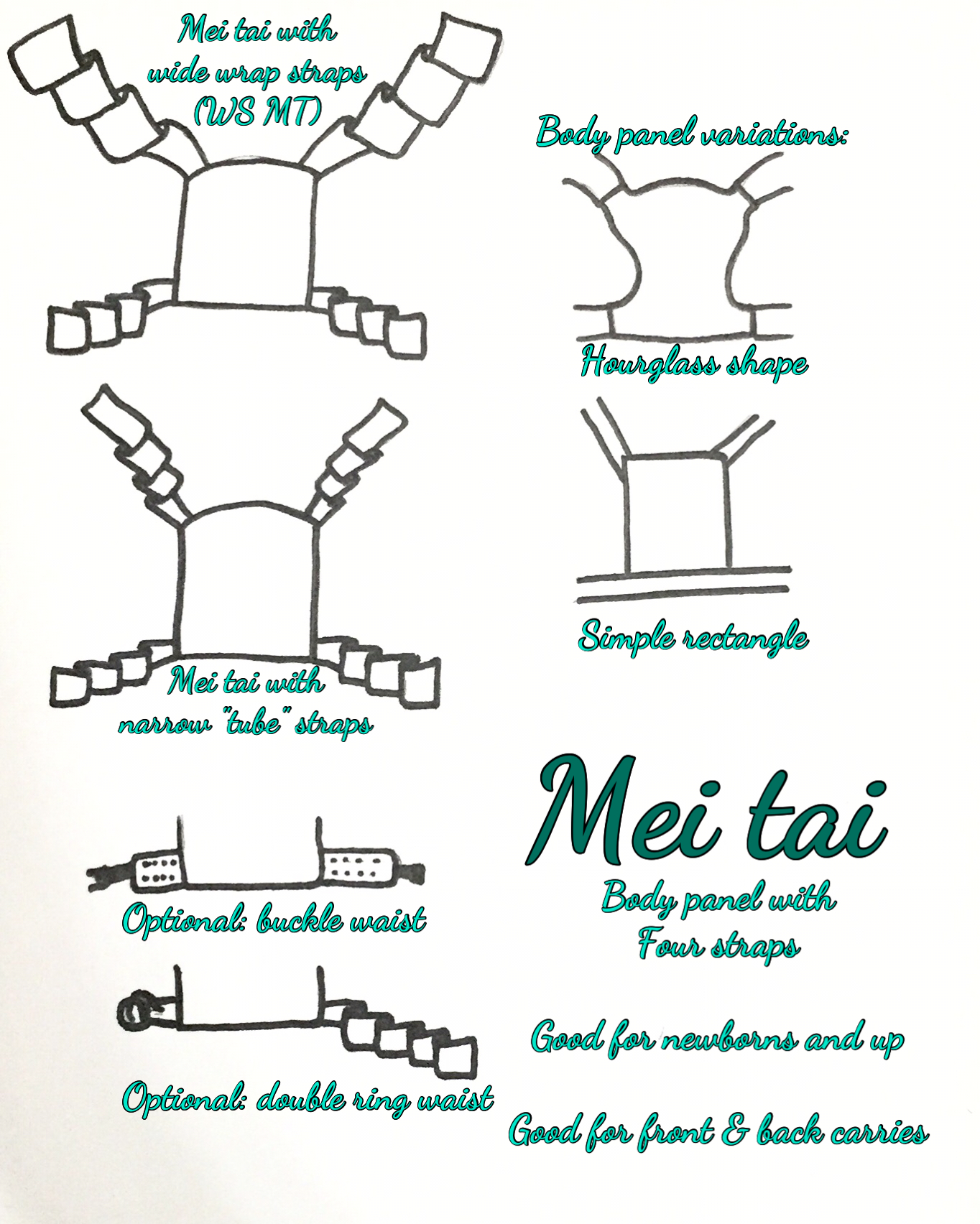Traditional Onbu
|
Reverse Onbuhimo
|
Buckle-Bu
|
Mei Tai
|
|
Appropriate Age:
Child must be independently sitting and able to put themselves into a sitting position.
|
Appropriate Age:
Child must be independently sitting and able to put themselves into a sitting position.
|
Appropriate Age:
Child must be independently sitting and able to put themselves into a sitting position. Generally preferred for walkers.
|
Appropriate Age:
Usable from newborn through toddlerhood. A too-big panel can be cinched and rolled to fit a smaller baby. Wrap straps can help offer supplemental support for a slightly too-narrow panel on a larger child.
|
|
Versatility:
Designed for back carries only. Can do front carries, too, but can be awkward to thread behind your back.
|
Versatility:
Designed for back carries only. Awkward for front carries.
|
Versatility:
Designed for back carries only. Possible to do front carries; easier with a carrier that buckles open and closed to allow the straps to cross (as opposed to a buckle-bu with ladder lock closure.)
|
Versatility:
Good for front, back, or hip carries. One of the few carriers that can be used to safely back carry a child before they can sit independently. Very experienced wearers can even use a mai tai to back carry a newborn.
|
|
Comfort:
High back carry with no waist band means that all of the child's weight is on the wearer's shoulders. This can be less comfortable for long periods of time. Long straps can be used for reinforcing tie-offs for more comfort.
|
Comfort:
High back carry with no waist band means that all of the child's weight is on the wearer's shoulders. This can be less comfortable for long periods of time. Long straps can be used for reinforcing tie-offs for more comfort.
|
Comfort:
High back carry with no waist band means that all of the child's weight is on the wearer's shoulders. This can be less comfortable for long periods of time.
|
Comfort:
Waist strap helps distribute some of the child's weight lower for more comfortable longer wearing. This can be uncomfortable for those who do not like pressure on their stomachs (such as expecting mothers.)
|
|
Ease & Speed:
A little tricky at first to learn how to properly get a high back carry, but once learned, very quick to get baby up and tied off.
|
Ease & Speed:
A little tricky at first to learn how to properly get a high back carry, but once learned, extremely quick to get a child up. Double locking rings mean straps can be pre-threaded and the child and carrier together can be put on like a backpack. Tie-offs are optional; once the child is up and the straps tightened, the carrier is secure.
|
Ease & Speed:
A little tricky at first to learn how to properly get a high back carry, but once learned, lightening fast to get a child up. Especially good for toddler with no patience for wrapping and tie-offs. Child and carrier together can be put on from a sitting or standing position like a backpack.
|
Ease & Speed:
Fairly easy to learn to use, but takes more time to put on each time. Waist strap must be tied first, which means the carrier cannot be put on while holding the baby. Takes a little more time to get all the straps wrapped and knotted.
|





